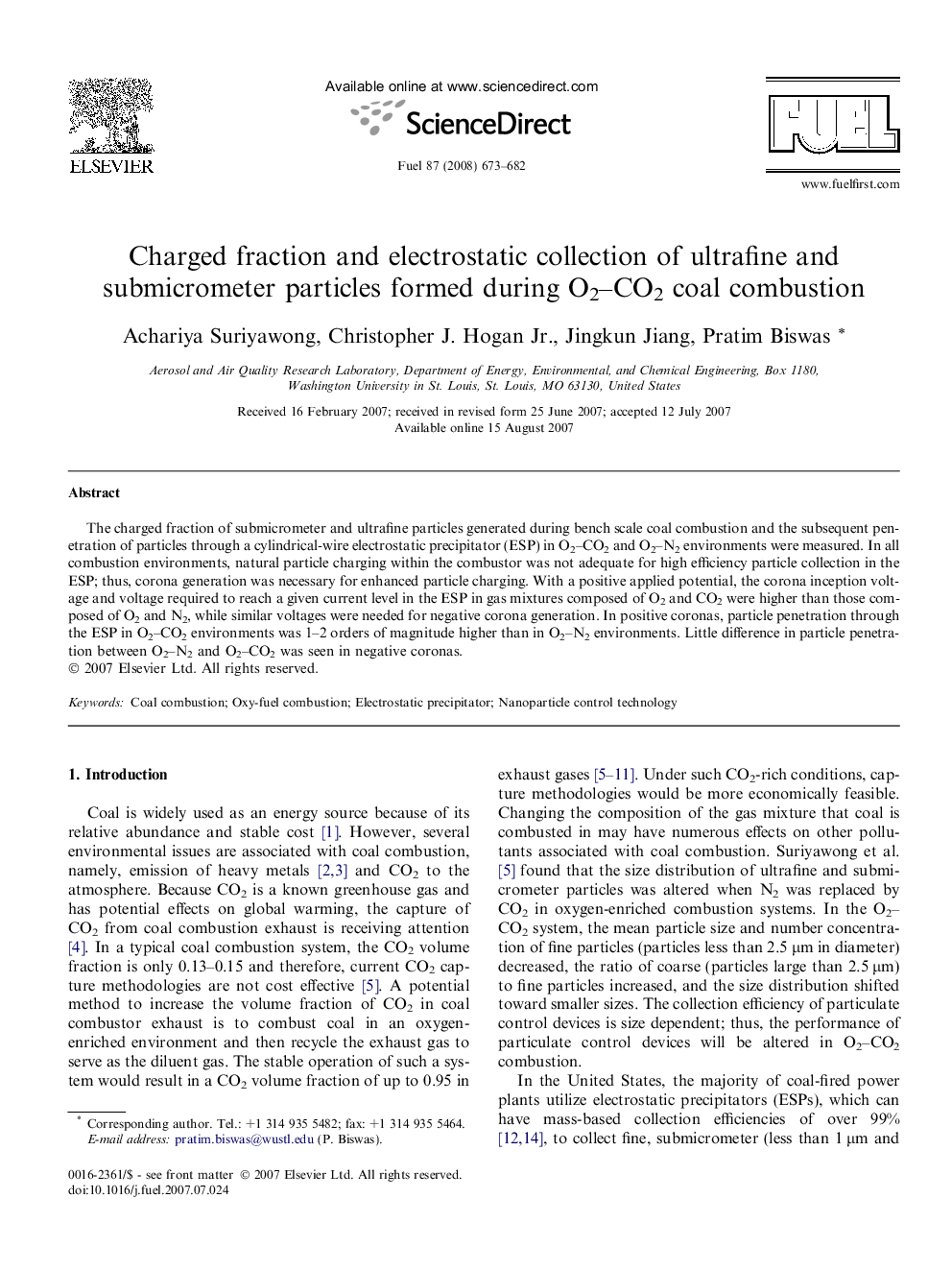| Article ID | Journal | Published Year | Pages | File Type |
|---|---|---|---|---|
| 207744 | Fuel | 2008 | 10 Pages |
The charged fraction of submicrometer and ultrafine particles generated during bench scale coal combustion and the subsequent penetration of particles through a cylindrical-wire electrostatic precipitator (ESP) in O2–CO2 and O2–N2 environments were measured. In all combustion environments, natural particle charging within the combustor was not adequate for high efficiency particle collection in the ESP; thus, corona generation was necessary for enhanced particle charging. With a positive applied potential, the corona inception voltage and voltage required to reach a given current level in the ESP in gas mixtures composed of O2 and CO2 were higher than those composed of O2 and N2, while similar voltages were needed for negative corona generation. In positive coronas, particle penetration through the ESP in O2–CO2 environments was 1–2 orders of magnitude higher than in O2–N2 environments. Little difference in particle penetration between O2–N2 and O2–CO2 was seen in negative coronas.
